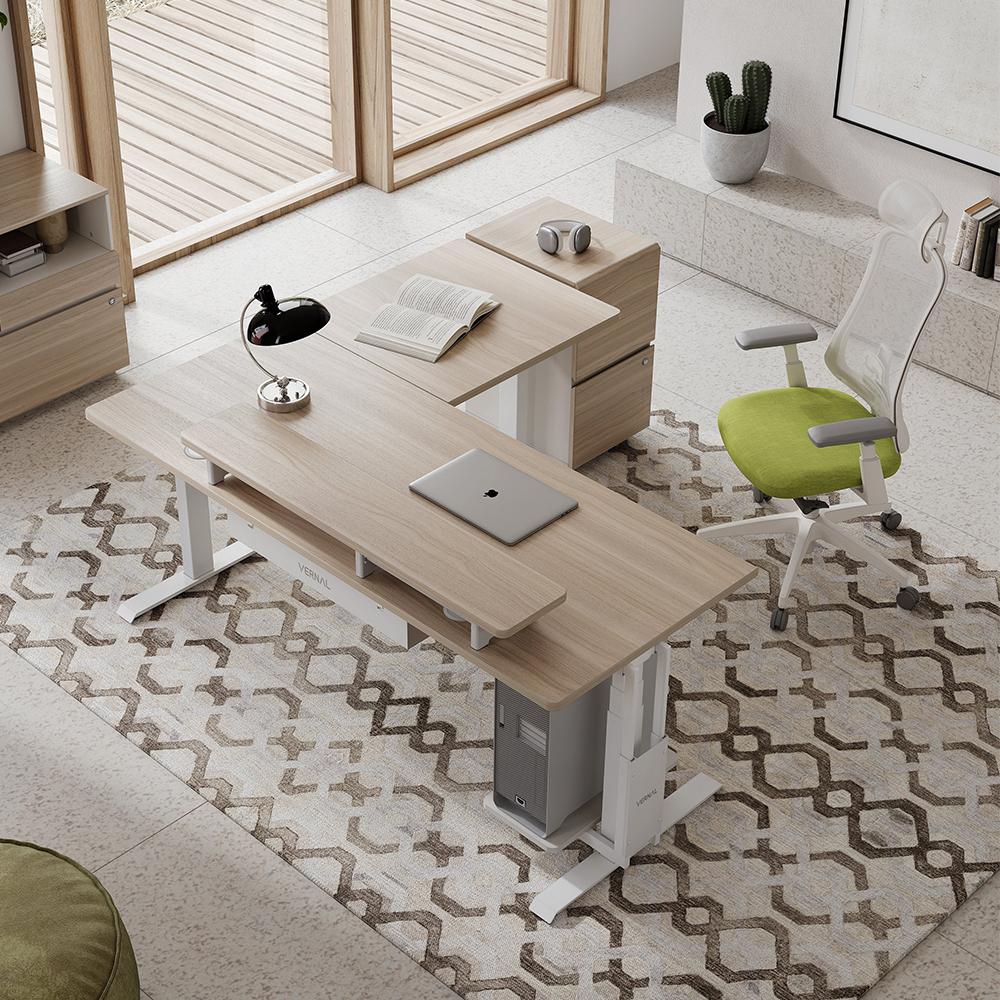Making the switch from a traditional seated workstation to a standing desk can feel daunting—but it doesn’t have to be. With the right planning, gradual adjustments, and a bit of equipment know-how, you can ease into a healthier, more dynamic workday without sacrificing comfort or productivity. This guide breaks down everything you need to know, from choosing the right desk style to setting up your ergonomics and building sustainable standing habits.

Why Choose One of the Best Standing Desks for Beginners
Not all standing desks are created equal. When you’re new to standing work, look for models that combine stability with smooth adjustability. The best standing desks on the market feature sturdy frames, wide height ranges, and easy controls—so you won’t worry about wobbling desktops or complicated levers. These foundational qualities ensure that your transition is driven by comfort rather than frustration, letting you focus on the health benefits rather than finicky hardware.
Starting with a Sit to Stand Desk: Essentials for Smooth Transitions
A sit to stand desk is the ideal starting point. Unlike fixed-height tables, these workstations let you alternate between sitting and standing with minimal effort. Beginners should aim for desks with intuitive mechanisms—such as gas-spring lifts or crank handles—that require little force to adjust. By switching positions every 30–60 minutes, you’ll gradually build endurance and avoid muscle soreness. Remember: the goal is balance, not marathon standing sessions.
Exploring Adjustable Desks for Personalized Ergonomics
Adjustable desks offer a range of customization options beyond simple height changes. Look for models that allow fine-tuning of desktop angle, keyboard tray position, and even tilt. By tailoring your workspace precisely to your body—whether you’re 5’ 2” or 6’ 4”—you ensure that your wrists, elbows, and shoulders remain in neutral positions. Personalized ergonomics help prevent strain and make standing feel natural, not forced.
Upgrading to an Electric Adjustable Standing Desk: Pros and Cons
Electric adjustable standing desks bring one-touch convenience to your workspace. With programmable height presets and whisper-quiet motors, you can transition from sitting to standing in seconds—no manual effort required. On the flip side, these desks typically cost more and rely on power, so consider your budget and office setup. If you foresee frequent height changes or share your desk with colleagues, the seamless operation may justify the investment.
Maximizing Small Areas with a Corner Standing Desk
Short on square footage? A corner standing desk tucks neatly into an unused nook, creating a compact yet functional workstation. Its L-shaped surface gives you separate zones for your monitor, laptop, and paperwork, while synchronized lift columns maintain consistent ergonomics across both panels. This configuration encourages natural movement as you rotate between tasks, making standing feel more integrated into your workflow.
The Appeal of a Standing Executive Desk in Home Offices
For those seeking a blend of style and substance, a standing executive desk offers premium finishes—like polished metal accents and spacious desktops—alongside robust lifting mechanisms. These models support heavy loads, so you can mount dual monitors, large reference materials, and even decorative elements without wobble. In a home office, a standing executive desk can serve as both a functional workstation and a statement piece that elevates your environment.
Natural Appeal: Solid Wood Standing Desk Options
If you prefer organic materials, a solid wood standing desk brings warmth and durability to your setup. Hardwoods such as oak, maple, or walnut offer sturdy surfaces that resist wear while adding visual richness. Many manufacturers integrate electric or manual height-adjustment systems seamlessly into the frame, ensuring that you don’t sacrifice functionality for aesthetics. The tactile comfort of a wood top can make your standing sessions feel more inviting and less clinical.
First Impressions Matter: Vernal Standing Desk Features
One notable entry in the standing desk market is the Vernal standing desk, which combines dual-motor lifts with programmable memory presets for multiple users. Its anti-collision sensors protect both your devices and desktop from unexpected obstructions. Cable channels and accessory mounts keep cords tidy, ensuring a clean, distraction-free workspace. For detailed specifications—such as lifting speed, warranty coverage, and finish options—visit the official Vernal website.
Learning from Others: A Vernal Review for New Users
Before committing, many beginners benefit from real-world feedback. Vernal reviews often highlight the desk’s stability under heavy loads and the convenience of its height presets. Users appreciate how quickly they adapted to standing once they no longer needed to wrestle with manual levers. While no desk is perfect, these insights can guide your decision and set realistic expectations for your own transition.
Building Sustainable Standing Habits
Transitioning smoothly requires more than just the right desk—it’s about habit formation. Start with 15–20 minutes of standing per hour, gradually increasing as your body adjusts. Set reminders on your computer or smartphone to prompt posture changes. Incorporate gentle stretches—shoulder rolls, calf raises, or hip flexor stretches—to keep muscles engaged. And on days when standing feels taxing, don’t hesitate to sit in your best ergonomic chair for a break. The key is consistency and listening to your body.
Conclusion and Next Steps
By choosing the right workstation—whether it’s a beginner-friendly sit to stand desk, a stylish White standing desk, or a budget-friendly manual model—you set the stage for a healthier, more productive workday. Combine ergonomic equipment with gradual habit-building and you’ll enjoy reduced discomfort, increased energy, and a refreshed mindset. Ready to start your journey? Explore our guide to the top standing desks of 2025, compare features, and take the first step toward a more dynamic workspace.

